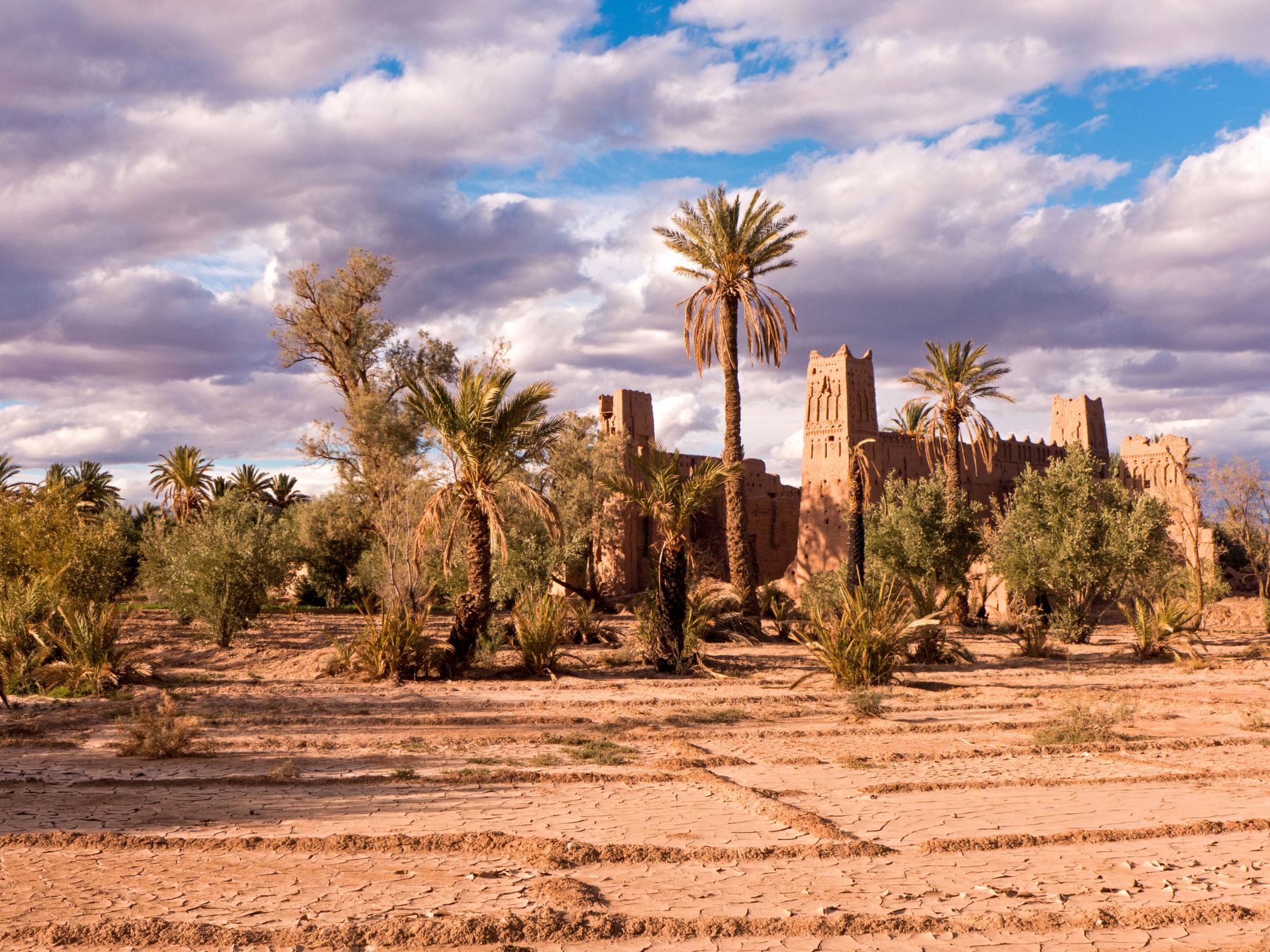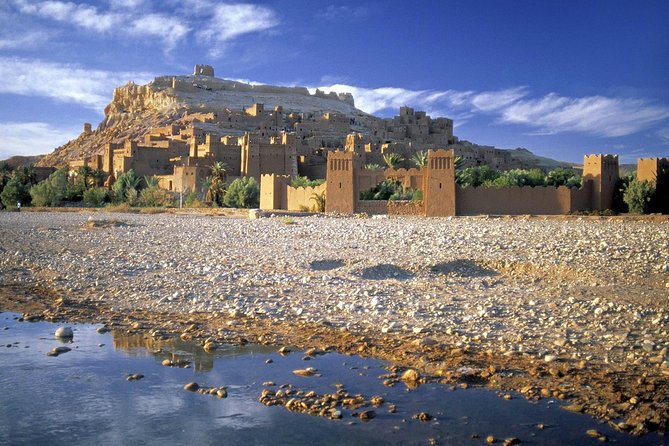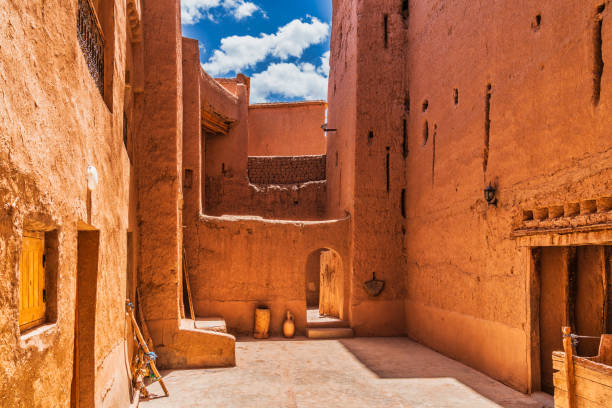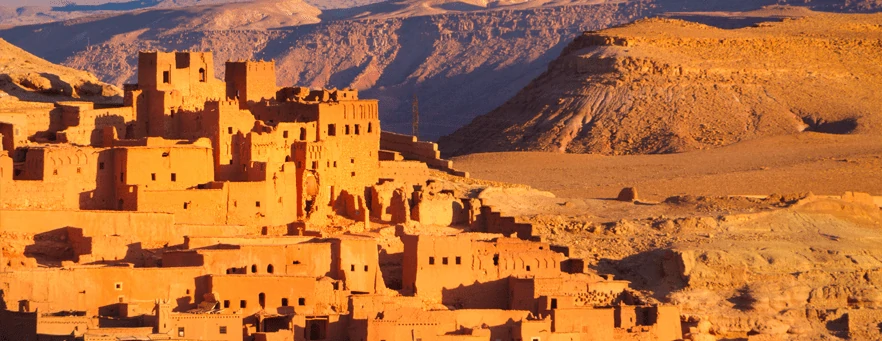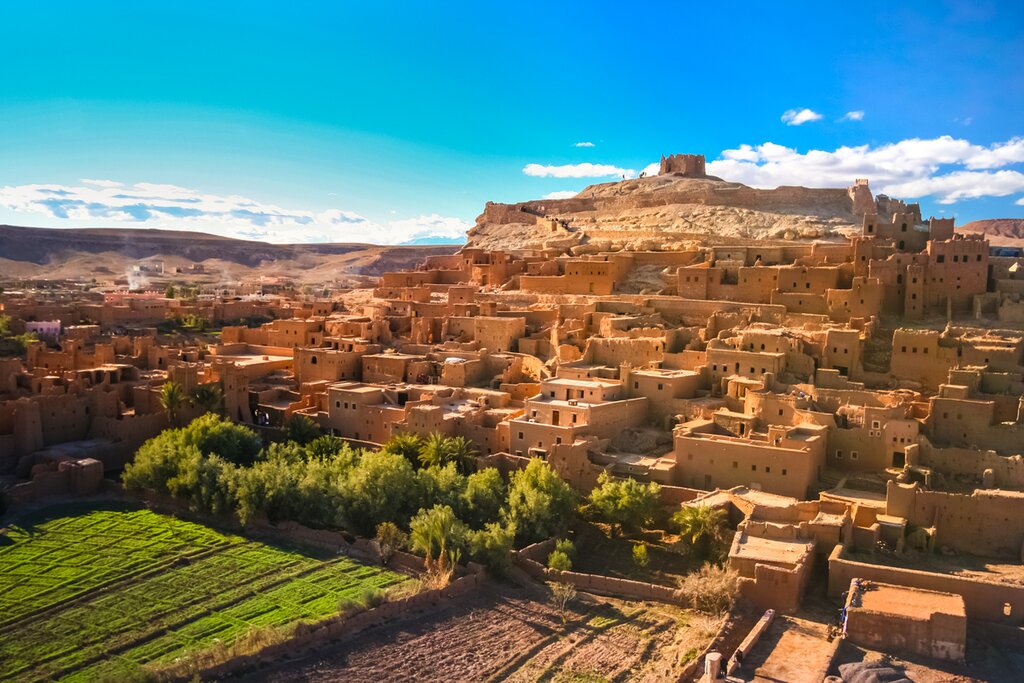Skoura consists of a historic fertile oasis lined with immense palm groves (a "palmeraie"), existing at the confluence of several rivers and streams descending from the central High Atlas mountains. Within the oasis, a few of these rivers join together to form the river known as Oued el-Hajjaj, which in turn joins the Oued Dadès (Dadès River) a short distance further south. The main modern town of Skoura today exists on the eastern edge of the oasis, along the main road from Ouarzazate.
Skoura is also the name of a Geological Basin
Agriculture
Many of these rivers remain dry outside the spring period, which has required a careful and elaborate system of irrigation and water preservation within the oasis. This system draws from both surface waters and subterranean waters. A series of khettaras (a type of underground canal) draws subterranean waters from the phreatic table in the higher-elevation regions of the mountain foothills and brings them to reservoirs in the oasis. At the same time, a series of dams along the main rivers allows for some of the surface waters to be diverted as well. From these reservoirs water is then distributed via a network of irrigation canals (seguias) to the various agricultural plots. This water supply system was collectively shared and maintained by the entire population of the oasis, with landowners agreeing to take turns to receive water for their crops. Alongside the palms a variety of common crops were grown such as dates, other fruit trees, vegetables, and cereals.
Demographics
According to the 2014 national census, the total population of the Skoura area (the commune called Skoura Ahl El Oust) was 24,055. The main town centre of Skoura had a population of 4332.
Historically, the population of the oasis was composed of many layers of immigration and ethnic groups. Some of the oldest known groups were Berbers (Amazigh) such as the Masmuda, followed by Arab tribes like the Banu Hilal and Banu Ma'qil. Later groups included Black Sub-Saharan Africans, many of them descended from slaves who were imported in various periods. One of these were the Haratin, who had useful agricultural expertise. Another groups were known as the 'Abid, members of the Black Guard of the early Alaouite sultans or other slaves often placed in charge of households, many of whom are part of religious brotherhoods characterized as the Gnawa. A long-standing Jewish community also existed in the oasis, possibly since its foundation, and historically participated in many of the same activities and even the same festivals as the Muslim population. The Jewish community had has left physical traces such as tombs and cemeteries. There were also prominent religious Muslim families who were leaders of local Sufi zawiyas (shrines or religious centers) and held a special status among the rest of the population.
GALLERY
